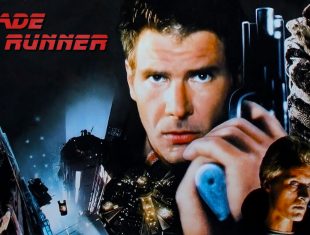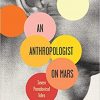
Would A Neurological Zombie Dream About Qualia?:Part 1
Would A Neurological Zombie Dream About Qualia?:Part 1
A zombie man allegedly does not feel anything.

Following “The Frame Problem””The Symbol Grounding Problem:Part1、2” and ”AI’s Unsolved Problem”, we entered the problem of “philosophy of mind” since the last post ”Qualia”.
“Philosophy of mind” is closer to philosophy compared to ”AI’s Unsolved Problem”, and it includes arguments that are inevitable to actualize mind and consciousness by computer.
In this post, I’m going to talk about ”neurological zombie” which is well known in ”philosophy of mind”.
I will first explain it using the Wikipedia page.
Neurological Zombie
A zombie that possesses human’s brain nerve cells and that is indistinguishable from a human in regards to its physiologically observable state.
The term neurological zombie is an argument in the topic of philosophy of mind, a mere tool of argument, and that it is an imaginary existence defined as ”it behaves just like a human does in its appearance, but possess no conscious experience(such as consciousness and qualia)”.
Very few philosophers believe that neurological zombies do exist, and questions such as ”can a neurological zombie exist?” and ”why are humans not neurological zombies” are often argued with other problems in philosophy of mind.
If we assumed that “a neurological zombie exists”, we would never able to distinguish one from a human no matter how much time we spent time with them.
It would laugh, get angry, and enthusiastically argue philosophical problems just like a human does.
In terms of physical, chemical and electrical responses, they would be the same as a human and indistinguishable. If they were distinguishable, it would not be a neurological zombie but *a behavioral zombie.
The only difference between a normal human and a neurological zombie is that a neurological zombie would not have the sense of ”joy”, ”anger”, or “frustration” from a complicated argument; it would lack any “consciousness(qualia)” at all.
To a neurological zombie, these senses would only mean an aggregate of physical, chemical and electrical responses.*Behavioral Zombie
A zombie that is indistinguishable from a human if observed its external behavior.
There’s a connotation that if dissected, there might be some potential to tell it apart from a human.End of explanation
A “neurological zombie” was proposed for a thought experiment in critiques of Physicalism.
Physicalism is a school of thought in which everything in the world can be explained by physical laws.
Here are the critiques of Physicalism incorporating the idea of “neurological zombie”.
1.Consciousness and qualia, and conscious experience such as joy, anger and frustration are something we feel and exist.
2.Conscious experience cannot be explained by physical laws.
3.A ”neurological zombie” looks and behaves just like a human, and every action can be explained by physical laws.
4.If a ”neurological zombie” existed, we humans would be ”neurological zombies” without conscious experience.
5.Nonetheless, we humans do have conscious experience for sure.
6.From stated above, things that cannot be explained by physical laws such as consciousness and qualia do exist.
These are critiques of Physicalism incorporating the idea of ”neurological zombie”.
Then, how should we explain things cannot be explained by physical laws such as mind and consciousness?
Do we need to employ concepts like spirit and soul, as science cannot explain them?
This is the today’s theme.
The 20th century science started off with quantum mechanics and the theory of relativity – this was an era of physical science.
From the end of the 20th century, neuroscience has evolved exponentially. Now the 21st century is said to be the era where mind and consciousness will be dealt with which physics cannot handle.
How will we able to deal with mind and consciousness that are not explainable by physical laws?
Every day we worry ”I wonder if the next job will work out”, we regret ”I didn’t do great at yesterday’s work”; we think about a lot of things.
The majority of what we are interested in are expressed in such emotions.
However, issues like worries and regrets cannot be solved by physical formula.
To create an AI with mind and consciousness, it needs to be able to handle mind and consciousness logically.
Let me explain how ROBOmind-Project solved this problem.
In the system of mind that ROBOmind-Project assumes on, there is a virtual world that is a replica of the external world which have been seen and heard.
The program of consciousness identifies the said re-constructed world.
Hence, consciousness does not directly identify the external world but does the virtual world that it reconstructed on its own.
However, consciousness is not aware of the fact that it identifies the said virtual world, but believes that it does directly identify the world.
This model of mind is based on the ”Hypothesis: consciousness’ virtual world”.
What constitutes a virtual world is qualia.
What consciousness is capable of identifying is qualia.
Consciousness can only identify the world by the unit of qualia.
As I explained in the post “Qualia Experience and My Story of Out-of-Body Experience:Part 2”, the qualia ”face” is composed of qualia such as eyes and nose, and qualia of eyes and nose are composed of the primitive qualia such as circle, triangle and line.
Consciousness pays attention to the eyes of a face and the roundness of eye balls, which demonstrates that it can only focus on qualia of eyes and circle.
This is what I mean by consciousness can only identify things by the unit of qualia.
Qualia covers other than shape of objects.
You feel happy when something good happens to you: this is the qualia of ”happy”.
You feel sad when something bad happens to you: this is the qualia of ”sad”.
You regret past mistakes because there’s a qualia of ”regret”.
You can believe in the future because there’s a qualia of ”hope”.
ROBOmind-Project calls these ”cognitive patterns”.
We all share the same cognitive patterns (qualia), and those with the same set can communicate with each other using them.
This ecosystem of communication using the shared cognitive patterns is called ”ecosystem of mind”(refer to ”The Turing Test and The System of Human Mind (Ecosystem of Mind)”.
Now Physicalists argue that as every single existing thing in the world is influenced by physical laws, anything can be explained by them.
How would ROBOmind-Project respond to that?
We would respond that what our consciousness identifies is virtual worlds.
A virtual world is a reconstruction of the external world, so there is no link with the physical world.
A virtual world is disconnected from the physical world.
The world consciousness identifies is not directly linked with the physical world.
Hence, consciousness, mind and emotions can’t be explained by physical laws.
The world of mind works in a completely different law from the physical world.
The world of mind functions by emotions.
If you receive something meaningful, you feel ”happy”.
If you receive something valuable from someone, you feel ”gratitude” towards them.
It is a “good” action to do something helpful for others.
We feel that we should do “the good” and should not do “the bad”.
These are mind laws.
Mind laws are only possible in a world of mind which is disconnected from the physical world.
Physical laws reveal the function of a complicated clock or computer.
In order to make a clock or computer, one needs to understand physical laws.
Likewise, our mind functions by mind laws.
To create an AI with the same mind as a human, we need to reveal such mind laws.
We need to create a program of mind that works by mind laws.
A robot that gets happy when winning the first place in a sports day, or a robot that cries with a friend who has been rejected by their crush.
If such robot existed, you would think that it has mind.
Nobody would dare to think that it is a neurological zombie.

 Would A Neurological Zombie Dream About Qualia?:Part 2
Would A Neurological Zombie Dream About Qualia?:Part 2 Would A Neurological Zombie Dream About Qualia?:Part 3
Would A Neurological Zombie Dream About Qualia?:Part 3
 The Turing Test and The System of Human Mind (Ecosystem of Mind)
The Turing Test and The System of Human Mind (Ecosystem of Mind)





